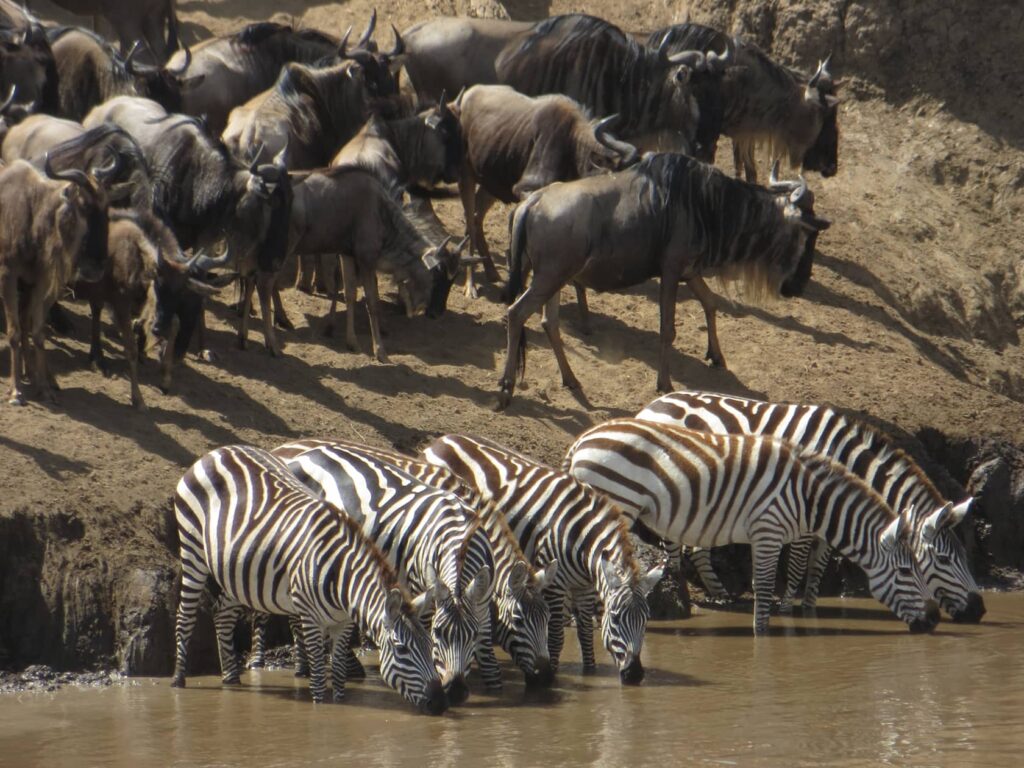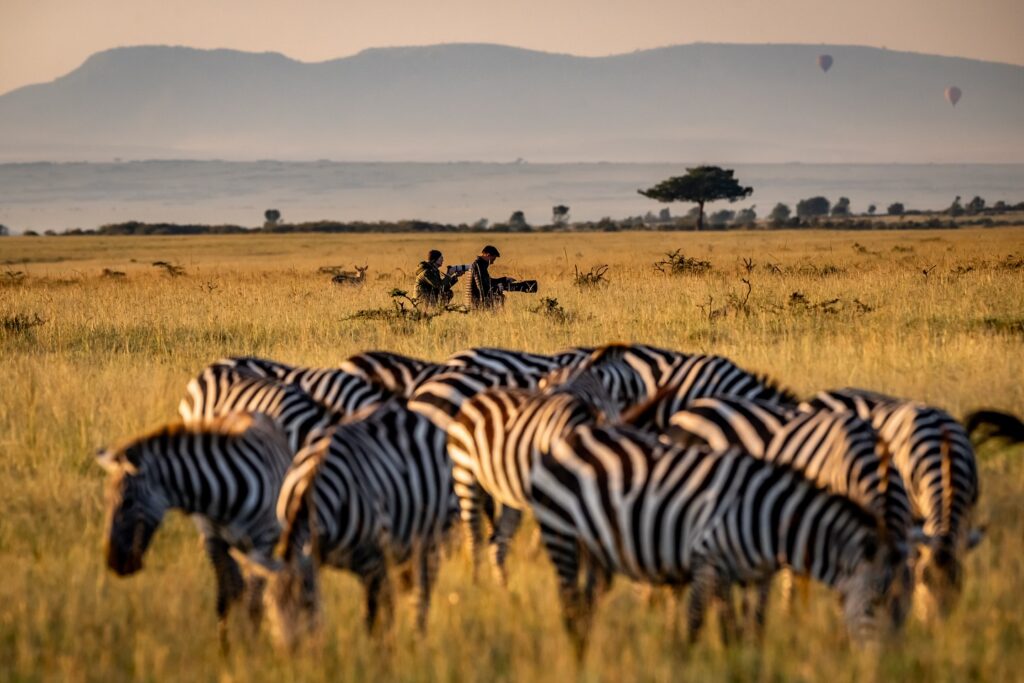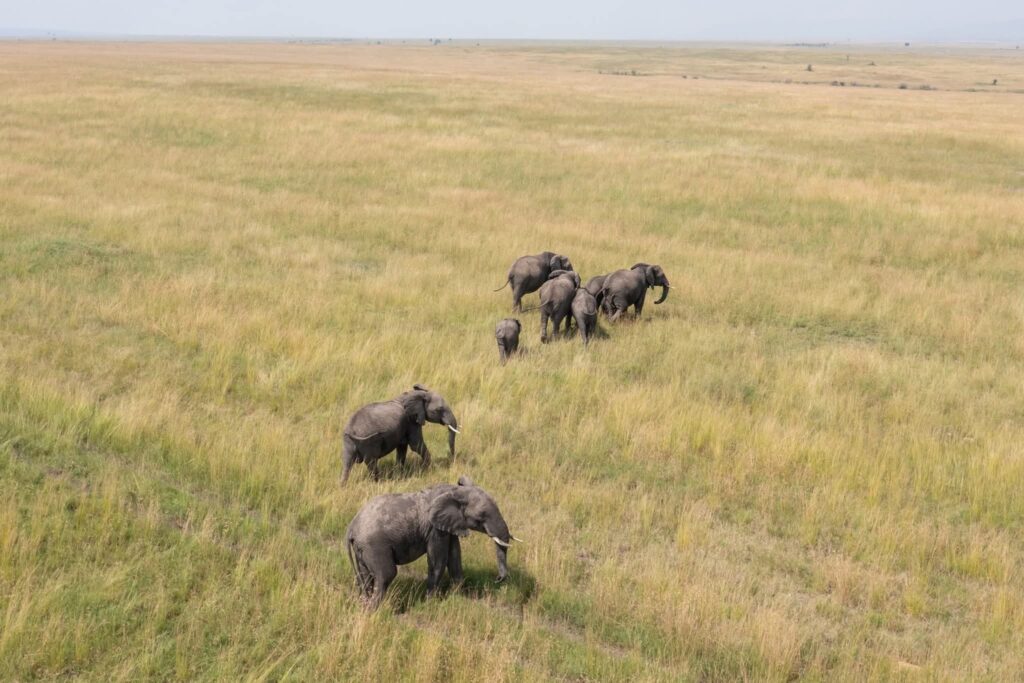The Definitive Guide to the Best Time to Visit Masai Mara

As you dream of your African adventure, the first, and perhaps most crucial, question you’ll ask is: When is the Best Time to go to the Masai Mara?
We understand that planning a safari is a once-in-a-lifetime event, and you want to ensure your timing is perfect. The simple, yet wonderful, truth is that the Masai Mara is an exceptional year-round safari destination. However, the best time to visit Masai Mara is truly subjective, depending on your priorities. Do you want to witness the drama of the Great Migration, see newborn animals, experience the best of birdlife, or perhaps enjoy a quieter, more exclusive, and budget-friendly trip?
This comprehensive guide, brought to you by the safari experts at Twinkle Star Tours & Safaris, is designed to break down the Mara’s annual cycle, ensuring you can choose the moment that aligns perfectly with your vision of the ultimate African safari.
The Best Time to Visit Masai Mara for the Great Migration
For the vast majority of our visitors, the sheer spectacle of the Great Wildebeest Migration defines the best time to visit Masai Mara in 2026. This is a wildlife event unparalleled on Earth, and if witnessing a million animals river crossing is your number one priority, then the dry season is when to visit Masai Mara. But when is the dry season?
The Dry Season: June to October (High/Peak Season)

This period is widely considered the best time to visit Masai Mara for general wildlife viewing and, more specifically, for the Great Migration.
| Month | Weather/Conditions | Wildlife Highlight | Key Considerations |
| June | Start of the dry season. Cooler, pleasant days. Vegetation starts to thin out. | Preparations are underway. Wildlife concentrates around water sources. | Start of peak season rates. Less crowded than the peak migration months. Excellent visibility. |
| July | Drier, sunny days, but cold mornings and evenings. Driest month. | Wildebeest herds may begin arriving from the Serengeti. High concentration near water. Best time for a masai mara safari. | Peak season crowds and prices start. Book well in advance. River crossings may begin. |
| August | Dry and cool weather. Ideal safari conditions. | Peak time for the spectacular Mara River crossings. Wildebeest are in the Mara in large numbers. | Highest crowds and premium rates. Game drive congestion is possible in the main reserve. |
| September | Still dry, slightly warmer days. Cold nights continue. | Migration still in full swing. Excellent game viewing, often including a second wave of river crossings. | Very busy. Premium rates. The best time to visit Masai Mara if you want to see the migration but prefer slightly less intense heat than October. |
| October | Warmer days, dry conditions. End of the official dry season. | Herds remain, then begin moving south as the short rains approach. Predators are highly active. | Still crowded and expensive, but crowds start to thin late in the month. Great photography light. |
Twinkle Star Tours & Safaris Insight:
While the river crossings are the highlight, they are unpredictable. A four-day safari during this period significantly increases your chances. Check out some of the Masai mara packages we got that is
10 DAYS MASAI MARA, SERENGETI AND NGORONGORO CRATER SAFARI
4 Days Fly-In Masai Mara Safari Package
4 Days Masai Mara Safari Holiday Package
10 Days Masai Mara to Diani Safari
To avoid the worst of the congestion, consider staying in one of the private Masai Mara conservancies bordering the main reserve. These offer exclusive game drives, lower vehicle density, and often permit off-road driving and night drives, creating a more intimate safari experience. This is truly the best time to visit Masai Mara for that iconic, big-cat-on-the-move action.
The Green Season Adventure which is the Hidden Gem
If you’re wondering when to visit Masai Mara in 2026 to avoid the crowds and experience a unique side of the savannah, the ‘Green Season’ is a fantastic, often overlooked option. This period is associated with lower rates and a stunningly beautiful landscape.
The Short Rains & Lion Season
January to March (Shoulder/Low Season)

This sweet spot is the bridge between the two major rainy seasons, making it a surprisingly excellent time to visit.
| Month | Weather/Conditions | Wildlife Highlight | Key Considerations |
| January | Warm and dry, with occasional short afternoon showers. Lion Season begins. | Calving (Birthing) Season is in full swing. Abundance of new life attracts big cats. Best time for birdwatching as migrants arrive. | Mild weather, absent crowds, and lower rates (outside of the New Year’s festive period). |
| February | Warmest and driest month of this period. Low rainfall. | Peak Calving Season, with thousands of baby animals born. Intense predator-prey interaction. | Fantastic photography conditions—golden light, fewer crowds. One of the quietest months for general safaris. |
| March | Start of the ‘long rains’ transition. Warmer, with afternoon thundershowers becoming more frequent. | Calving continues. Migrant birds start preparing to depart. Best time to visit Masai Mara for unique photographic light. | Some camps may begin to close late in the month. Road conditions start to deteriorate. Lower rates apply. |
The ‘Lion Season’ Advantage: As the plains are full of vulnerable newborns, this is the prime time to witness Africa’s big cats—lions, cheetahs, and leopards—stalking their prey. For the enthusiast seeking dramatic, life-and-death predator action, this is arguably the best time to visit Masai Mara.

The Long Rains: April to May (Low Season)
This is the true “low season,” characterized by the most substantial rainfall.
| Month | Weather/Conditions | Wildlife Highlight | Key Considerations |
| April | The height of the ‘long rains’. Can experience heavy, persistent rain. Temperatures are slightly cooler. | The landscape is incredibly lush, green, and vibrant. Excellent for general game viewing—resident animals are fat and happy. | Lowest rates and virtually no crowds. Some lodges/camps close for maintenance. Roads can become very muddy and challenging. A fly-in safariis highly recommended. |
| May | Rainfall begins to subside, but still wet. Cooler days. | Lush scenery perfect for landscape photography. Birds remain abundant. | Low rates continue. Roads are still poor, but game viewing conditions improve as the month progresses. |
Twinkle Star Tours & Safaris Insight: Don’t let the word “rain” completely deter you. The Green Season is a photographer’s dream: the light is soft, the air is dust-free, and the storm clouds provide dramatic backdrops. Crucially, this is when to visit Masai Mara if you’re a budget-conscious traveller, as accommodation rates are significantly reduced.
Detailed Seasonal Comparison: Dry vs Rainy Season in Masai Mara
To help you decide when is the Best Time to go to the Masai Mara, here is a side-by-side comparison of the two main seasons.
| Feature | Dry Season (June – October) | Rainy/Green Season (November – May) |
| Main Attraction | The Great Wildebeest Migration & River Crossings | Calving Season, Bird Migration, Lush Scenery, Low Rates |
| Crowd Levels | Highest (Especially July – September) | Lowest (Especially March – May) |
| Prices | Highest / Premium Rates | Lowest / Favourable Rates |
| Game Viewing | Excellent. Thinner vegetation, animals congregate near waterholes. | Good, but challenging. Taller grass makes spotting harder, but animals are dispersed and happy. Big cat action around the newborns. |
| Photography | Clear, sunny skies. Dusty. Best for action shots of the Migration. | Sublime, dramatic skies. Dust-free, vibrant colours. Best for landscape and baby animal shots. |
| Weather | Warm and dry days, very chilly mornings/evenings. | Warm, often humid days. Rain in the afternoon (especially March-May). |
| Mosquito/Malaria Risk | Lowest due to dry conditions. | Higher due to standing water and humidity. (Always take precautions year-round.) |
Best Time to Visit Masai Mara, Month by Month

Here is your quick-reference guide to the best time to visit Masai Mara, categorized by month, brought to you by Twinkle Star Tours & Safaris.
- January & February: Best for: Calving Season, Predator Action, Birding, Low Crowds, Great Value. Weather: Hot, mostly dry.
- March: Best for: Calving continues, Excellent Photography. Weather: Transition to long rains; afternoon thundershowers.
- April & May: Best for: Lowest Rates, Lush Green Scenery, Birding, Extreme Exclusivity. Weather: Peak of the long rains; muddy roads. (Requires flexible travel plans and a preference for fly-in safaris).
- June: Best for: Excellent Game Viewing, Start of the Dry Season, Pre-Migration Calm. Weather: Pleasant, dry days.
- July: Best for: The start of the Migration, Peak Game Viewing. Weather: Cool and dry.
- August & September: Best for: The Great Migration and Mara River Crossings (The most popular choice). Weather: Cool and dry.
- October: Best for: End of the Migration, Active Predators, Excellent Game Viewing. Weather: Warm and dry.
- November & December: Best for: The ‘Short Rains,’ Fresh Greenery, Second Wave of Bird Migrants, Good Value. Weather: Short, refreshing afternoon rains.
Twinkle Star Tours & Safaris Final Recommendation
At Twinkle Star Tours & Safaris, we believe the best time to visit Masai Mara is simply when you can come. The Mara’s resident game, the Big Five, the countless plains animals, and the majestic landscape—never leave.
- For the Iconic, Bucket-List Experience: Book your trip between July and October to maximize your chance of seeing the Great Migration’s river crossings. Just remember to book early (6-12 months in advance) to secure your preferred accommodation, especially in the conservancies.
- For the Photographer, Budget Traveller, or Bird Lover: Consider the ‘Shoulder Season’ of January to March. This offers a beautiful, intense safari experience, watching cheetahs hunt vulnerable newborn calves—with fewer crowds and a better price point.
No matter when to visit Masai Mara, Twinkle Star Tours & Safaris is here to tailor the perfect safari for you. Our expert local guides know the Mara intimately and will ensure you are in the best time to visit Masai Mara for your personal preferences. Contact us today, and let’s start planning your unforgettable journey into the heart of the wild.
